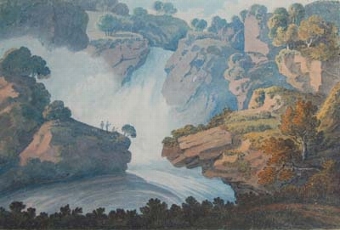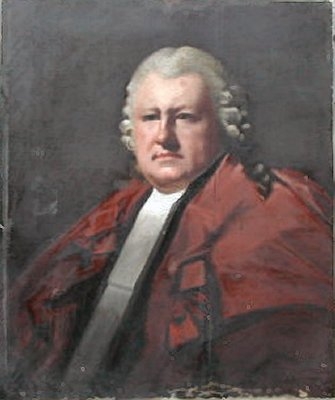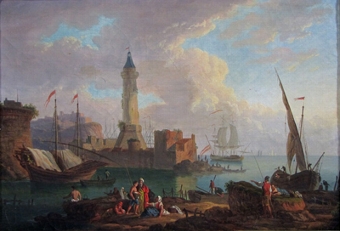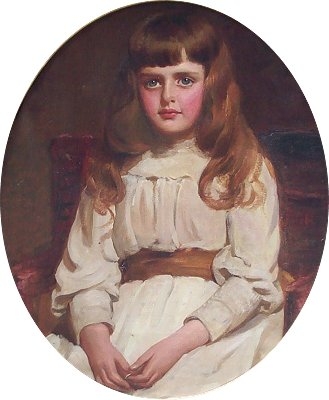featured item
portrait of edward stuart talbot, 1844-1934, bishop successively of rochester, s
- View other items in:
- antiques interior design modern and vintage
- other interior design
artware ltd
Enquire about this antique
Artware Ltd has 565 antiques for sale.
click here to see them all
Talbot, Edward Stuart 1844-1934, bishop successively of Rochester, Southwark, and Winchester, the younger son of John Chetwynd Talbot, Q.C., son of the second Earl Talbot and a leader of the parliamentary bar, by his wife, Caroline Jane, only daughter of James Archibald Stuart-Wortley-Mackenzie, first Lord Wharncliffe [q.v.], was born in London 19 February 1844. The Talbot family is an ancient one, many of whose members, including Edward Talbot''s nephew Sir G. J. Talbot [q.v.], have reached legal and political eminence. His father, who was a strong supporter of the Oxford movement, died in 1852, and his widowed mother formed a close friendship with the two sisters Lady Lyttelton and Mrs. Gladstone. Sent as a day boy to Charterhouse, he was compelled by illness to leave in 1858. He proceeded to Christ Church, Oxford in 1862, obtained a first class in literae humaniores (1865) and in law and modern history (1866), and was elected in the last-named year a senior student of Christ Church, where he remained for four years as modern history tutor. In 1869 he was appointed first warden of Keble College, Oxford, and was ordained deacon. In 1870 he was ordained priest and married
Lavinia, third daughter of George William Lyttelton, fourth Lord Lyttelton [q.v.]: her eldest sister was the wife of his brother
J. G. Talbot.
Leeds was sorry to lose him when in 1895 Talbot became bishop of Rochester. To the episcopate he brought high academic distinction as well as educational and parochial experience. He continued the scheme inaugurated by his predecessors of dividing his unwieldy diocese, thus separating the agricultural area round Rochester from the populous area of south London, where he had always had his bishop''s house. After protracted negotiations the work was accomplished, and Talbot was able to complete the other task which he had inherited, namely, that of making the old church of St. Saviour''s, Southwark, the cathedral of the new diocese. He was enthroned there in 1905. His relationship with his clergy was friendly, although breaches of Prayer Book order by some of them placed him in a difficult position. The evangelical party suspected him as a Tractarian bishop, while high churchmen resented his efforts to restore order. As time passed he was understood, and won the respect and love of all his clergy. Not a ready speaker, at times he was hesitating, and in his anxiety to make his points clear addressed his audience at too great a length. He showed that a high churchman could work with evangelicals and liberals, and could understand Free churchmen also.In 1911 Talbot was translated to the bishopric of Winchester, which he held for twelve years. It was the autumn of his life, but it was still a full and busy life. His prestige stood high and he spoke with great authority in the councils of the Church. One of Archbishop Davidson''s staunchest supporters, he was noted for his width of view and his great gift of fairness. The last ten years of his life were spent in retirement in Kensington, where he died 30 January 1934. As The Times obituary notice rightly says, ?he helped to create, as well as to maintain, a tradition essential both to religious and to national life?.
Talbot celebrated his golden wedding while bishop of Winchester in 1920. Mrs. Talbot survived him until 1939. They had three sons and two daughters. Of the sons, Edward became superior of the community of the Resurrection; Neville (died 1943) became bishop of Pretoria and was afterwards vicar of St. Mary''s church, Nottingham; and Gilbert, in whose memory the original Toc H was founded, was killed in action in 1915. A portrait in oils of Talbot by George Richmond, painted in 1876, hangs in the hall of Keble College, of which he was elected the first honorary fellow in 1931. There is another portrait in Christ Church, painted by H. Harris-Brown. A cartoon of him as bishop of Rochester by ?Spy? appeared in Vanity Fair 21 April 1904.
Antiques.co.uk Ref: TWH9CH9N
- Materials:
- Oil on Canvas
- Width (cm):
- 159 X 115.57cm (62.6 x 45.5ins)
Artware Ltd
Artware Fine Art specialises in fine antique, decorative and historical portraits and topographical pictures . We cover a period from the 17th and 18th centuries through to the 19th & 20th Centuries. We have over 150 portraits in stock, which can be viewed on our web site, each historical portrait has well researched biographical information both on the sitter and the artist.
Contact details
18 La gare
51 Surrey row
London
Greater London
SE1 0BZ
UNITED KINGDOM
T: 0207 921 97904
E: greg@artwarefineart.com
W: www.artwarefineart.com












